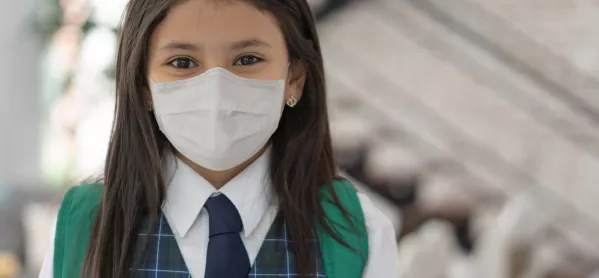Reopening all schools across the UK could push the coronavirus R value above 1, a modelling study suggests.
Scientists from the London School of Hygiene and Tropical Medicine (LSHTM) looked at the social contacts when schools were either open or closed, taking into account the different types of restrictions.
The research, which has not been peer-reviewed, combined the data with estimates of the susceptibility and infectiousness of children compared with adults to estimate the impact of reopening schools on R (the Covid-19 reproduction number).
Boris Johnson: ‘No decisions’ made on simultaneous school return
Back to school: PM has ‘some bandwidth’ for March opening, says expert
Prime minister: Reopening schools from 8 March is ‘cautious’ option
The scientists wrote: “Our results suggest that reopening all schools could increase R from an assumed baseline of 0.8 to between 1.0 and 1.5, or to between 0.9 and 1.2 reopening primary or secondary schools alone.”
Coronavirus: Transmission in schools ‘is likely to be low’
The researchers suggest that measures, such as mass testing of schoolchildren and rapid contact tracing, might be used to mitigate the potential risk factors of school opening.
R represents the average number of people that each Covid-positive person goes on to infect.
When the figure is above 1, it means the outbreak is growing, but when it falls below 1, it means the outbreak is shrinking.
Commenting on the research, Sarah Lewis, professor of molecular epidemiology at the University of Bristol, said the models are based on the likely change in contact patterns from when children are not in school to when they are in school.
She said: “However, we know from other research that transmission in schools is likely to be low.
“Therefore it doesn’t necessarily follow that if a child’s contacts change from five per week to 30 when they go back to school that there will be [six] times as many infections.”
Professor Lewis added: “It is also important to not just consider school reopenings in terms of what will happen to the R number, as there are many harms caused by school closures, as illustrated by a recent review of the evidence, and these must be balanced against any effects on transmission of the virus.”
Yuliya Kyrychko, reader in mathematics at the University of Sussex, said: “These latest results indicate that once the schools open (either partially or fully), this will inevitably lead to an increase of contacts between children from different households, their parents and teachers, which may result in the increase of R number, thus possibly triggering another growth in cases.
“This is partially mitigated by the rapidly ongoing vaccination campaign, though at present it does not include children, and the overall proportion of individuals who have received the full two doses is quite small.
“The implication of this is that any changes in the contact structure in population should be introduced very gradually, and should be accompanied by a robust and effective monitoring of disease transmission to make sure any localised outbreaks do not trigger a significant new wave of infections.”
The warning came as Scotland confirmed that there will be a staggered return of schools, starting with children in years Primary 1 to Primary 3 going back from Monday.
Meanwhile, Boris Johnson has said the government hopes to start reopening English schools on March 8 - but this will depend on falling infection rates.

